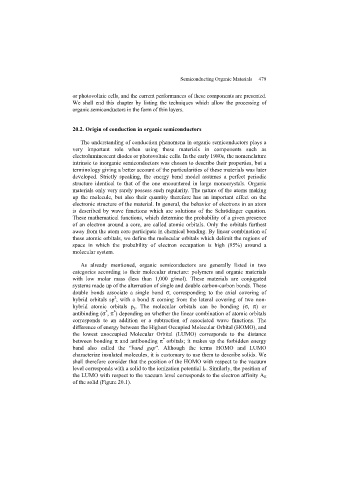Page 481 - Discrete Mathematics and Its Applications
P. 481
460 7 / Discrete Probability
Note that the sum of the probabilities that there are k successes when n independent Bernoulli
trials are carried out, for k = 0, 1, 2,...,n, equals
n
k n−k n
C(n, k)p q = (p + q) = 1,
k = 0
as should be the case. The first equality in this string of equalities is a consequence of the
binomial theorem (see Section 6.4). The second equality follows because q = 1 − p.
Random Variables
Many problems are concerned with a numerical value associated with the outcome of an experi-
ment. For instance, we may be interested in the total number of one bits in a randomly generated
string of 10 bits; or in the number of times tails come up when a coin is flipped 20 times. To
study problems of this type we introduce the concept of a random variable.
DEFINITION 6 A random variable is a function from the sample space of an experiment to the set of real
numbers. That is, a random variable assigns a real number to each possible outcome.
Remark: Note that a random variable is a function. It is not a variable, and it is not random!
The name random variable (the translation of variabile casuale) was introduced by the Italian
mathematician F. P. Cantelli in 1916. In the late 1940s, the mathematicians, W. Feller and
J. L. Doob flipped a coin to see whether both would use “random variable” or the more fitting
term “chance variable.” Feller won; unfortunately “random varible” was used in both books and
ever since.
EXAMPLE 10 Suppose that a coin is flipped three times. Let X(t) be the random variable that equals the
number of heads that appear when t is the outcome. Then X(t) takes on the following values:
X(HHH ) = 3,
X(HHT ) = X(HTH ) = X(THH ) = 2,
X(TTH ) = X(THT ) = X(HTT ) = 1,
▲
X(TTT ) = 0.
DEFINITION 7 The distribution of a random variable X on a sample space S is the set of pairs (r, p(X = r))
for all r ∈ X(S), where p(X = r) is the probability that X takes the value r. (The set of pairs
in this distribution is determined by the probabilities p(X = r) for r ∈ X(S).)
EXAMPLE 11 Each of the eight possible outcomes when a fair coin is flipped three times has probability 1/8.
So, the distribution of the random variable X(t) in Example 10 is determined by the proba-
bilities P(X = 3) = 1/8, P(X = 2) = 3/8, P(X = 1) = 3/8, and P(X = 0) = 1/8. Conse-
quently, the distribution of X(t) in Example 10 is the set of pairs (3, 1/8), (2, 3/8), (1, 3/8),
and (0, 1/8). ▲
EXAMPLE 12 Let X be the sum of the numbers that appear when a pair of dice is rolled. What are the values
of this random variable for the 36 possible outcomes (i, j), where i and j are the numbers that
appear on the first die and the second die, respectively, when these two dice are rolled?

